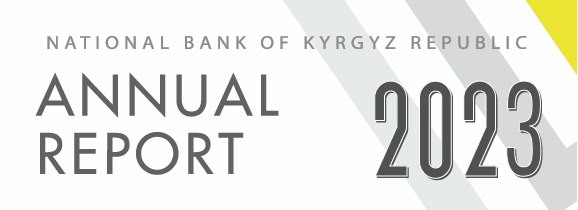Credits
(January-September 2007)
In the period from January to September 2007, the increase in credits’ volume continued in the real sector of economy. For instance, the total portfolio of operating commercial banks increased by 81.5% over the reporting period and made 20.6 Billion soms as of the late June. The credit portfolio increased by 61.9% and made 18.4 Billion soms without regard to OJSC Ayil Bank. It’s noteworthy that in September the growth rate of the credit portfolio of operating commercial banks remarkably decreased.
The credit debt of the banking system in national currency increased 2.2 times (the growth made 51.0% without regard to OJSC Ayil Bank), and the credit debt in foreign currency increased by 66.6%. Because of the higher growth rates of credits in national currency their share increased by 5.7 pp in the credit portfolio and made 36.3% as of the late September. At the same time, an increase in the credit portfolio was registered for the majority of operating commercial banks.
The weighted average rate for the credits in national currency making up the portfolio of operating commercial banks decreased by 3.8 pp during the reporting period, down to 20.6% (without regard to OJSC Ayil Bank it decreased by 1.1 pp, down to 23.3%). The credit rates in foreign currency remained unchanged and made 18.0% (Table 1 and Chart 1).
An increase in credits was registered for all branches of the real sector, except communications. The share of credits to agricultural production increased (by 8.9 pp to make 12.2%) in industry structure of the credit portfolio; the increase was also in the share of mortgage credits (by 2.5 pp, up to 16.8%) and construction (by 0.9 pp, up to 6.7%). The share of the rest industries decreased. Nevertheless, the credits to trade accounted for the major share (36.7%), same as before. The share of credits to households made 7.2%, and the one to industrial production accounted for 7.0%. The credits to transportation, communications, procurement and processing, and social services having not high share amounted to 2.2% in total; the share of ‘other’ credits amounted to 11.3%.
Concentration index of the credit portfolio of commercial banks remained unchanged in the reporting period, at 0.09; this is equivalent to the market presence of 11 banks and indicates its low concentration. The level of branch concentration of the banks’ credit portfolios also didn’t change and amounted to 0.46 as of the late September, which showed that the credit debt of major banks was divided approximately between two industries. Credits concentration by the industry was still high: the concentration index in 7 out of 11 branches was more than 0.18.
During the nine months of 2007 the volume of new credits increased by 68.8% against the comparable period of 2006 and made 19.3 Billion soms (Table 1 and Chart 2). Credits flow increased by 61.1% and amounted to 18.4 Billion soms without regard to OJSC Ayil Bank. At the same time, in Q3 the volume of credits was decreasing; while in the period from July to August a decrease was inconsiderable, in September the volume of granted credits decreased by 29.8% compared to the previous month.
The volume of new credits in national currency increased by 91.6% and amounted to 6.2 Billion soms during the period from January to September 2007 (64.4% increase, up to 5.3 Billion soms, without regard to OJSC Ayil Bank); the volume of credits in foreign currency increased by 59.9%, up to 13.1 Billion soms. The ratio of new credits to GDP increased by 5.4 pp compared to the period from January to September 2006 and made 19.5%.
An increase in the flow of new credits was registered for all industries during the nine months of 2007, except the credits to communications, procurement and processing, and social services. However, the largest increase in credits volume was registered for agricultural credits (by 4.3 times) and mortgage credits (by 2.7 times); this had an impact on the increase in the average shares of these industries, which amounted to 6.9% and 13.9%, correspondingly, against the comparable period of 2006. A slight increase in the share was also registered for credits to households (up to 9.6%), while the shares of the other industries decreased. The credits to trade accounted for the largest share (43.9%) in the total flow of credits, same as before.
In the reporting period, the flow of credits increased for all maturity categories, except the credits with up to 3 months maturity. A considerable increase was registered for the volumes of the credits with 1 year to 3 years maturity (by 2.3 times) and with more than 3 years maturity (by 2.3 times) (Table 3). As a result, the maturity of new credits increased by 6.8 months against the comparable period of the previous year and amounted to 24.6 months.
In the period from January to September 2007, the average level of interest rates for new credits in national currency decreased by 2.9 pp against the comparable period of the previous year and amounted to 22.7%. A decrease in the interest rates was registered almost for all branches of the real sector. Nevertheless, a decrease in the value of credits to agricultural production and trade and commercial transactions had the most effect on a decrease in the credits value. A decrease in the average value of interest rates was caused by an increase in the share of agricultural credits with rather low rates as well as by a decrease in the share of credits to trade and commercial transactions with higher value. The credits in national currency were issued to communications for the lowest rates (for 14.8% in average for the reporting period); the credits to social services were issued for the highest rates (for 26.6%).
In terms of maturity, a decrease in the average level of rates was registered almost for all the credits, excluding the rates for the credits with more than 3 years maturity (Chart 5).
The average interest rates for credits in national currency decreased in banks by 1.6 pp and amounted to 23.4% in average for the period; the rates decreased in 13 banks and increased in 6 banks.
The average interest rate for credits in foreign currency increased by 1.3 pp against the comparable period of the previous year and made 18.3% in the reporting period. The increase in the rate was mostly due to an increase in the value of ‘other’ credits, credits to agricultural production and construction, as well as to the structural changes in credits flow. However, credits in foreign currency were issued to construction for the lowest rates (for 16.0% in average for the reporting period); to social services credits in foreign currency were issued for the highest rates (for 23.7%).
In terms of maturity, a considerable increase in the rates for the credits with up to 1 month maturity and with 1 to 3 months maturity was registered; for the rest maturity categories the changes of average rates were inconsiderable (Chart 7). In terms of the banks, the average interest rates for credits in foreign currency decreased in 12 banks and increased in 7 banks.

















